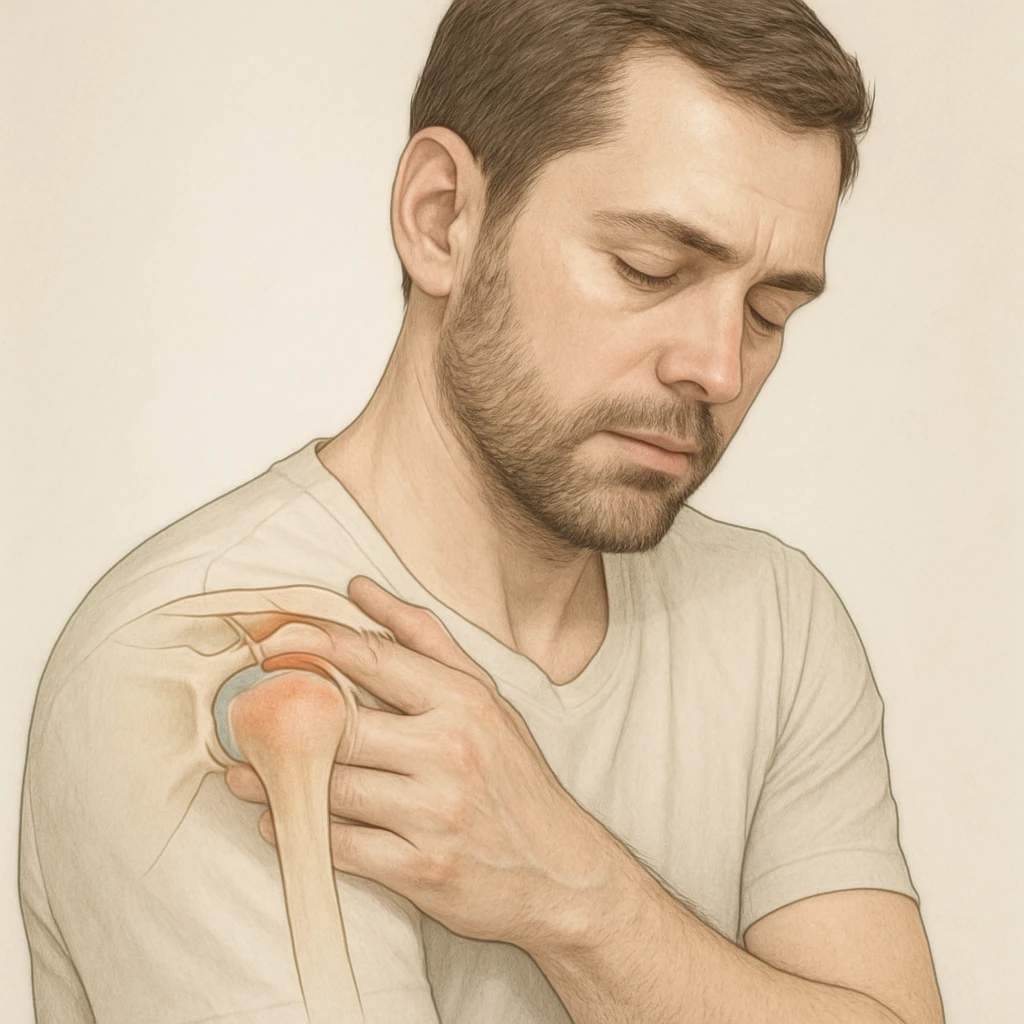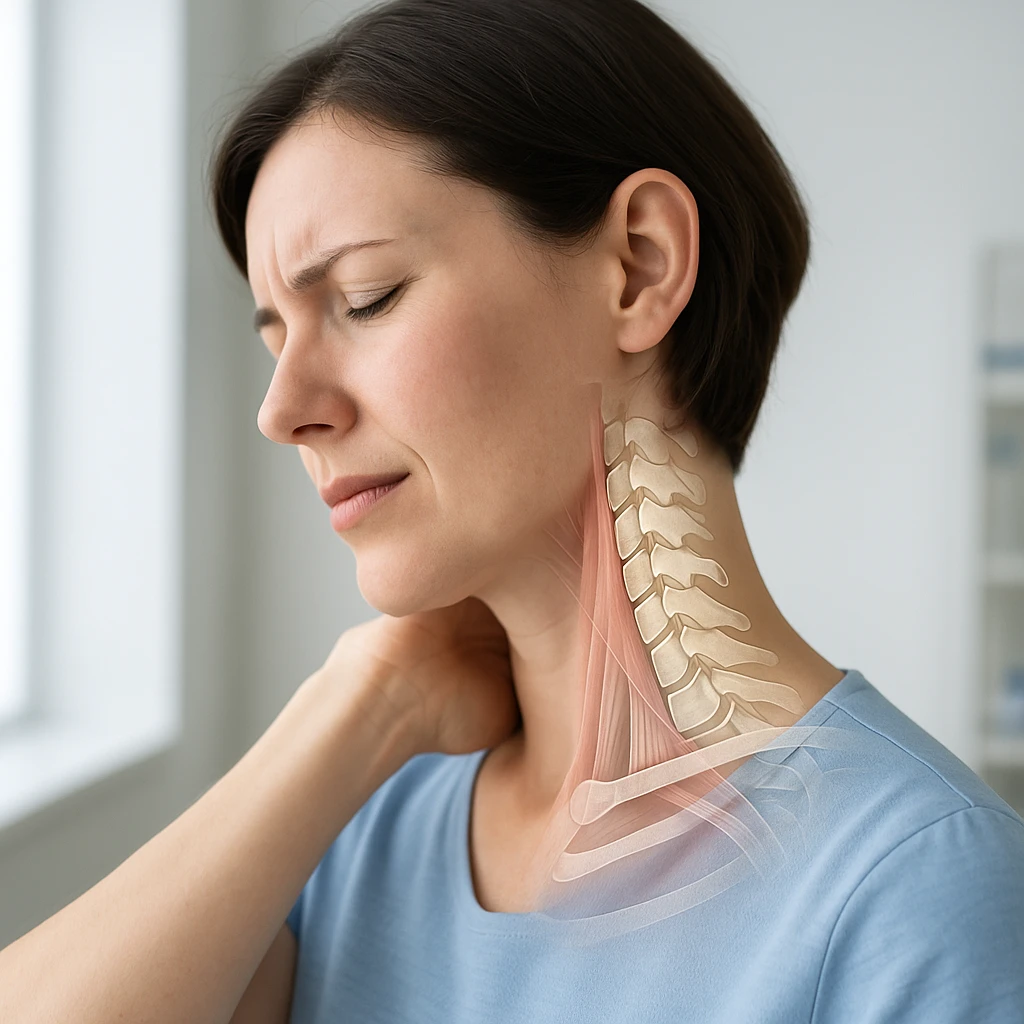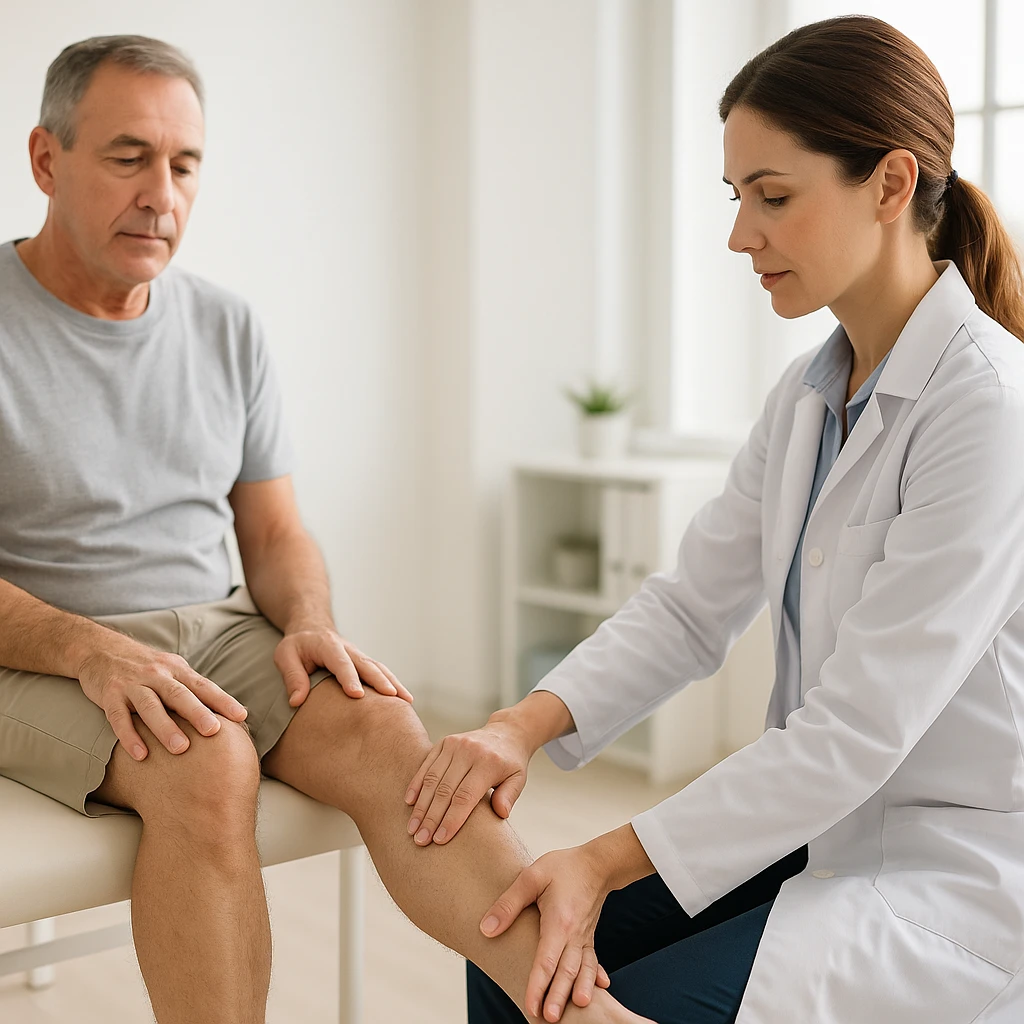Understanding Nocturnal Muscle Cramps: Causes, Diagnosis, and Management Strategies
Nocturnal Muscle Cramps
Nocturnal muscle cramps are sudden, involuntary contractions of one or more muscles that occur during sleep, most often affecting the calf or foot. These episodes are typically brief-lasting from a few seconds to as long as ten minutes-but can produce intense pain followed by lingering soreness. The abrupt onset and nighttime occurrence often interrupt sleep, leading to discomfort and fatigue the following day.
Typical Presentation
- Sudden onset of sharp, tightening pain in the calf or foot during rest or sleep.
- Muscle may feel firm or contracted; cramp resolves spontaneously or with stretching.
- Pain usually subsides within minutes but may leave residual soreness or tenderness.
- Episodes may occur occasionally or in clusters, with varying frequency and intensity.
Differentiating from Other Nighttime Disorders
| Condition | Typical Features | Distinguishing Points |
|---|---|---|
| Nocturnal Muscle Cramps | Sudden painful contraction of muscle, usually in calf or foot; brief duration; occurs during sleep. | Muscle is visibly or palpably contracted; pain relieved by stretching. |
| Restless Legs Syndrome | Unpleasant sensations with urge to move legs; symptoms relieved by movement. | Not associated with painful muscle contraction; movement provides relief. |
| Vascular Claudication | Cramping or aching pain induced by exertion due to poor blood flow. | Occurs during activity, not at rest or during sleep. |
Epidemiologic Burden
These cramps are a common complaint, particularly among older adults. Epidemiologic data indicate that approximately 30 to 40 percent of adults over the age of 50 experience nocturnal muscle cramps. Their frequency tends to increase with advancing age and with reduced physical activity. Beyond the immediate pain, recurrent cramps can significantly affect sleep quality, daily functioning, and overall well-being, underscoring their clinical importance even though they are usually benign.
Mechanisms and Causes of Nighttime Muscle Cramps
Physiological Mechanisms
Nocturnal muscle cramps arise from temporary disruptions in normal neuromuscular control, leading to a sudden, involuntary contraction of muscle fibers. The process is thought to involve increased excitability of peripheral motor nerves or the spinal motor neurons that regulate them. When these neurons become overactive, they trigger rapid, sustained contractions that are difficult to voluntarily relax. This neuromuscular hyperexcitability can occur even in otherwise healthy individuals and tends to increase with age as muscle elasticity and nerve responsiveness change.
Electrolyte imbalance, often considered a common cause of cramps, appears to play a limited role in typical nighttime episodes. Instead, altered muscle length and dysfunction within the muscle spindle and Golgi tendon reflexes are believed to contribute more significantly. When the muscle remains in a shortened or inactive position for prolonged periods, these sensory systems may misfire, initiating an inappropriate contraction during rest.
Idiopathic and Secondary Causes
Most nocturnal muscle cramps are idiopathic, meaning they occur without a clearly identifiable underlying disorder. However, secondary causes can increase susceptibility by affecting muscle or nerve function. Common contributing factors include:
- Dehydration, which alters local tissue excitability
- Pregnancy, where circulatory and neuromuscular changes heighten cramp risk
- Peripheral vascular disease, which may compromise muscle perfusion
- Medications such as diuretics and beta-agonists that affect fluid balance or nerve stimulation
While these secondary associations can influence the onset or severity of cramps, they do not account for most cases. The idiopathic form remains the predominant presentation, reinforcing the importance of neuromuscular and biomechanical mechanisms rather than systemic disease as primary contributors.
Lifestyle and Inactivity Links
Emerging evidence suggests that prolonged sedentary behavior and decreased physical activity are important modifiable risk factors. Inactivity contributes to muscle shortening and reduced flexibility, both of which may increase mechanical tension within the muscle and alter its normal reflex control. Over time, this reduced range of motion can predispose the muscle to spontaneous contractions during rest or sleep. Regular movement and gentle stretching throughout the day may therefore help maintain optimal muscle length and reduce the likelihood of nocturnal cramping episodes.
Diagnosis and Differential Evaluation
Clinical Diagnostic Approach
The diagnosis of nocturnal muscle cramps is primarily clinical and relies on a detailed patient history and the description of symptoms. Key diagnostic characteristics include sudden, painful, and involuntary contractions that occur during rest or sleep, typically in the calf or foot. The cramps usually last seconds to several minutes and may leave residual soreness afterward. A careful assessment should document the frequency, duration, and timing of episodes, as well as any potential precipitating factors such as prolonged sitting, dehydration, or medication use.
- Assess symptom pattern: duration, frequency, and affected muscle groups.
- Identify potential triggers such as inactivity, fluid imbalance, or medication use.
- Check for residual soreness or tenderness following cramp episodes.
- Exclude neurological or vascular abnormalities during examination.
Physical examination is generally normal between episodes, though localized muscle tenderness may be noted following a cramp. In the absence of other neurological or vascular findings, no additional diagnostic tests are required. The goal is to confirm that the presentation aligns with the characteristic pattern of nocturnal painful muscle contractions rather than other underlying disorders.
Differential Diagnosis
| Condition | Key Characteristics | Distinguishing Features |
|---|---|---|
| Nocturnal Muscle Cramps | Sudden, painful muscle contractions during rest or sleep. | Brief duration; pain relieved by stretching. |
| Restless Legs Syndrome | Uncomfortable sensations causing an urge to move the legs. | No true muscle contraction; movement relieves symptoms. |
| Peripheral Neuropathy | Burning, tingling, or numbness in extremities. | Persistent sensory changes; not limited to nighttime episodes. |
| Vascular Claudication | Pain or cramping in legs triggered by physical activity. | Occurs during exertion, relieved by rest, not typically nocturnal. |
When to Investigate Further
Additional laboratory or imaging studies are generally unnecessary unless there are signs suggestive of systemic disease. Further evaluation may be warranted if cramps are severe, persistent, or accompanied by weakness, sensory loss, or other neurological symptoms. In such cases, clinicians may investigate for metabolic disturbances, medication side effects, or vascular and neuromuscular disorders. However, for most individuals, a thorough history and physical examination provide sufficient information for accurate diagnosis and reassurance.
When to See a Doctor
- Cramps occur frequently and interfere with sleep or daily activities.
- Pain is severe, persistent, or associated with weakness or swelling.
- Symptoms suggest an underlying vascular or neurological condition.
Persistent or worsening symptoms should prompt a focused assessment to rule out secondary causes.
Treatment and Management Approaches
First-Line Non-Pharmacologic Measures
Management of nocturnal muscle cramps begins with non-pharmacologic strategies aimed at reducing cramp frequency and improving muscle function. Regular stretching of the calf and foot muscles, particularly before bedtime, can help maintain optimal muscle length and reduce spontaneous contractions during rest. Gentle range-of-motion exercises and moderate physical activity throughout the day support overall neuromuscular stability and may decrease nighttime episodes in sedentary individuals.
Hydration plays a complementary role, as maintaining adequate fluid balance supports normal muscle excitability. While electrolyte imbalance is not a primary cause of most nocturnal cramps, sufficient hydration helps sustain tissue perfusion and muscular recovery after activity. Supportive footwear and ergonomic adjustments for individuals who stand or sit for long periods may also minimize muscle fatigue, indirectly lowering the risk of nocturnal cramping.
Pharmacologic Interventions
Pharmacologic treatment is generally reserved for cases that persist despite lifestyle modification. Among available agents, quinine has shown modest benefit in reducing cramp frequency and severity. However, its use is discouraged due to potential for serious adverse effects, including cardiac arrhythmias, thrombocytopenia, and hypersensitivity reactions. Clinical guidelines recommend avoiding routine or long-term use of quinine, reserving it only for select patients after careful risk assessment.
Other agents such as magnesium, calcium, and various vitamin supplements have been studied with inconsistent outcomes. Evidence does not support their routine use, though some individuals may perceive subjective improvement. In the absence of a clearly effective and safe pharmacologic therapy, clinicians generally emphasize continued stretching, physical activity, and correction of identifiable contributing factors, such as dehydration or medication triggers. This conservative, non-drug approach remains the cornerstone of management for most patients experiencing nocturnal muscle cramps.












